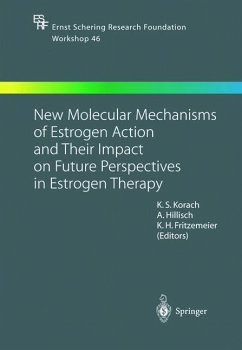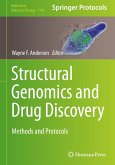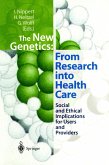This volume is based on the international workshop on "New Molecular Mechanisms of Estrogen Action and Their Impact on Future Perspectives of Estrogen Therapy" held in Berlin, 5-7 March, 2003. Researchers from industry and leading academic laboratories describe recent findings on the mechanisms of estrogen action via different ER subtypes, the interaction of ERs with different cofactors, and the action of ERs through different pathways including non-genomic mechanisms. Furthermore, the book provides information on (a) the biological functions of the two ER subtypes, ERa and ERb, as concluded from different gene-knockout models, (b) the design and synthesis of new selective estrogens, and (c) possible clinical applications for new selective estrogens. All chapters are written by leading experts in the field, who survey and summarize the approaches and findings of different companies and institutions. The book gives the reader a balanced and up-to-date view of new developments in the field of estrogens.
From our current knowledge, it is obvious that estrogen action in volves more than reproduction and fertility. Rather, estrogens affect and influence a number of other organ systems such as the immune, cardiovascular and central nervous system as well as the gastrointes tinal tract, urinary tract and skeleton. The importance of estrogens and estrogen receptor activity is appreciated from the spectrum of significant physiological dysfunctions that occur when there is a loss The participants of the workshop VI Preface of the hormone or the receptor activity. Loss of estrogen, however (for instance during menopause), occurs with time and results in a variety of clinical conditions. We know that the developmental loss of estrogen, as seen in clinical cases of aromatase gene mutations and experimental models, has dramatic effects in both men and women alike. The evidence that these effects are mediated through the estrogen receptor(s) is based on similar but not always identical phenotypes as observed in experimental animal models of estrogen receptor mutations as well as the single clinical case of an estrogen receptor alpha mutant patient. Developing an understanding of the spectrum of estrogen in a variety of tissues related to the condition of estrogen loss is a major and highly active clinical as well as basic scientific research area. Following the discovery of a second estrogen receptor and possible receptor ligand-independent activity as well as the genomic and non genomic actions of estrogen, it is clear that the mechanisms of the effects of estrogen are multifaceted.
From our current knowledge, it is obvious that estrogen action in volves more than reproduction and fertility. Rather, estrogens affect and influence a number of other organ systems such as the immune, cardiovascular and central nervous system as well as the gastrointes tinal tract, urinary tract and skeleton. The importance of estrogens and estrogen receptor activity is appreciated from the spectrum of significant physiological dysfunctions that occur when there is a loss The participants of the workshop VI Preface of the hormone or the receptor activity. Loss of estrogen, however (for instance during menopause), occurs with time and results in a variety of clinical conditions. We know that the developmental loss of estrogen, as seen in clinical cases of aromatase gene mutations and experimental models, has dramatic effects in both men and women alike. The evidence that these effects are mediated through the estrogen receptor(s) is based on similar but not always identical phenotypes as observed in experimental animal models of estrogen receptor mutations as well as the single clinical case of an estrogen receptor alpha mutant patient. Developing an understanding of the spectrum of estrogen in a variety of tissues related to the condition of estrogen loss is a major and highly active clinical as well as basic scientific research area. Following the discovery of a second estrogen receptor and possible receptor ligand-independent activity as well as the genomic and non genomic actions of estrogen, it is clear that the mechanisms of the effects of estrogen are multifaceted.








